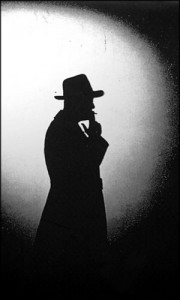Earlier on this site I reviewed Kim Young-Ha’s I Have The Right To Destroy Myself, which I really enjoyed, partly because it was extremely international. While it took place partly in Korea, the story could have taken place anywhere, and no particular knowledge of Korean society or history was necessary to understanding it. Prior to publication of that work, Jimoondang/KLTI published a slender volume containing the two short stories Photo Shop Murder and Whatever Happened To The Guy In The Elevator. Like “Destroy Myself” these stories have a universal appeal. Kim’s work is existential and Kafka-esque, while also quickly told and efficiently plotted.
Photo Shop Murder is a noirish detective story. It begins, of course, with a corpse, his (now) widow who may be a murderer, but certainly invokes feelings from the detective, a lover with a baseball bat, and a strange character who has seduced the wife with a cleverly deployed series of photographs. The detective is an alienated man, partially because he has caught his own wife in flagrante delicto, a scene that is revealed in flashback and features a brilliant image of soiled sheets and their washing.
The style and translation are outstanding – Author Kim and translator Jason Rhodes do an excellent job of reproducing the flat, semi-documentary style that westerners associate with Humphrey Bogart or James Rockford. The first line of the story is the deadpan, “Why do murders always seem to happen on Sundays?” The tone is consistent throughout with the narrator snapping semi-wise, even to himself, as in his observation that murder investigations are better than other crimes because, “With murder, at least one side was quiet.”
The crime in Photo Shop Murder ends in near randomness – everything that has been investigated turns out to be meaningless, although the crime is solved – and the detective returns to his unhappy home, where memories overwhelm him and he is semi-accidentally injured by his wife. The story ends with a stark image: “I fell asleep. In my dream, I’d become a fruit, and my wife was peeling my skin. It was a happy dream.”
Whatever Happened To The Guy Stuck in the Elevator is an absurdist look at day in which everything goes wrong: People reveal themselves to be self-centered, and technology reveals itself to be untrustworthy. The single businessman who narrates, begins his day by breaking his razor, and things continue to go wrong from there. On his way out of the building he is forced to use the stairs because the elevator is stalled. On the 5th floor he finds the reason, a man is stuck (and perhaps hurt or dying) in the elevator door. The rest of the story focuses on the man’s attempts to notify someone about the man in the elevator and his continually unraveling day. There is an amusing set piece in which the businessman gives an ‘important’ presentation to his colleagues; an argument for increasing toilet-paper efficiency. Predictably, the presentation does not go as he expects. When the narrator finally does reach 911 to report the man in the elevator he is disbelieved and when he returns to his apartment, where the hot water has been turned off, he is still in a state of uncertainty.
man in the elevator and his continually unraveling day. There is an amusing set piece in which the businessman gives an ‘important’ presentation to his colleagues; an argument for increasing toilet-paper efficiency. Predictably, the presentation does not go as he expects. When the narrator finally does reach 911 to report the man in the elevator he is disbelieved and when he returns to his apartment, where the hot water has been turned off, he is still in a state of uncertainty.
Together, these two works are an amusing but somewhat depressing portrait of a disconnected society and the absurdity of modern life.




